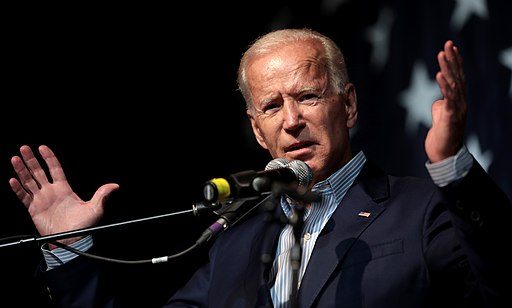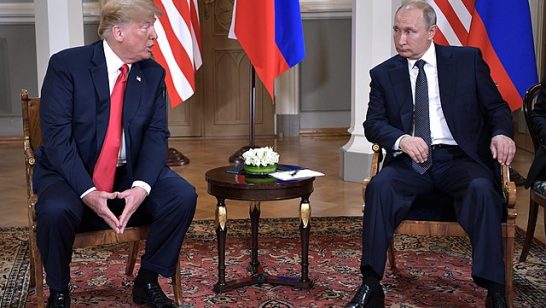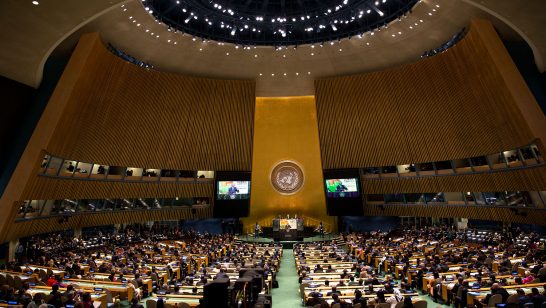
The incoming Biden administration is probably getting more advice than it can consume these days. Three urgent challenges stand out—the COVID-19 pandemic, climate change and nuclear weapons. President-elect Biden is right to make the pandemic his top priority since it is causing untold suffering to the entire world. Climate change is an even more dire threat to the planet, though in the longer term. All three of these threats are well-understood, as well as the actions needed to mitigate them, and all cry out for U.S. leadership. But while the first two threats played a role in the U.S. Presidential election, the problem of nuclear weapons was hardly mentioned, nor does it appear near the top of the list of issues that concern most citizens. However, the threat posed by the presence of some 14,000 nuclear weapons, spread among several countries, is a clear and present danger that could claim millions of lives and cause severe damage to civilization itself. The most urgent actions that should be taken to deal with this situation are apparent even now.
The New START Treaty
It seems clear that the New START Treaty will be extended by Biden and Putin. Fortunately, this can be done for up to five years by Presidential action alone. The Trump/Putin offers on the table pointed to a one-year extension of the treaty, along with a freeze on each side’s total number of nuclear weapons. Given the short time remaining before the treaty expires in February, a simple five-year extension of New START without conditions is the obvious solution. This could have been achieved months ago if the Trump administration had not insisted on bringing China into the treaty, which was hopeless from the beginning. Trump’s threat not to continue New START was based on the criticism that it did not deal with all Russian nuclear weapons and did not include China. It also appeared to rest upon the flawed assumption that Russia was “desperate” to save New START. Allowing New START to expire would have been like someone deciding to stop taking his heart medicine because it does not also prevent cancer.
A possible freeze on the total number of warheads is not directly related to New START, nor is it absolutely necessary at this point, but it would be a positive step forward and, for the first time, would provide some constraint on Russia’s sizeable stockpile of short-range (tactical) nuclear weapons. If a freeze cannot be negotiated promptly, declarations by each side of the size of its nuclear arsenal would be a useful first step. This could be followed later by verification measures and reductions. In any case, one hopes that U.S. Ambassador Billingslea is giving the Biden Transition Team an accounting of his stewardship of the New START Treaty, including what transpired in the three subgroups he established on the issues of warheads, space and verification.
Further steps
With New START stabilized, the Biden and Putin administrations would have time to review the options for further longer-term steps. These should include additional reductions. Current levels of U.S. and Russian nuclear weapons far exceed what is required for deterrence purposes. The Obama administration proposed about a one-third reduction from New START deployed strategic warhead levels, which still seems like a good next step, and further reductions in delivery vehicles would also make sense. A new agreement should also clarify the status of several exotic new Russian systems under development. Bringing China into the discussion is also desirable, but will not be easy, since China points out that U.S and Russian levels far exceed its own. This is another reason why further bilateral reductions are needed. As a first step, China has indicated it would be willing to join the U.S. and Russia in restating the Reagan-Gorbachev principle that “A nuclear war cannot be won and must never be fought.” It would also be useful to pursue confidence-building and risk-reduction measures with both countries. The Biden administration should also reexamine doctrinal issues, such as the purpose of nuclear weapons, how to lengthen the decision time for the use of nuclear weapons, the conditions under which nuclear weapons might be used and the necessity and affordability of modernization programs. Looking toward possible five-power negotiations on nuclear weapons, it would be wise for Britain and France to be considering what contributions they could make to such a process.
One other bilateral problem needs urgent attention. We lost the INF Treaty, which prohibited all ground-launched missiles with ranges between 500 km and 5,500 km. Although neither side wants an arms race in such systems, Russia is deploying its controversial 9M729 cruise missile, and the U.S. is reported to be pursuing five different INF-range missiles. President Putin has offered a moratorium on such deployments, which could perhaps lead to a ban or at least a limit. As part of this, he has proposed exhibitions for U.S. inspectors of Russia’s 9M729 missile and, for Russian inspectors, a launcher the U.S. is deploying in Eastern Europe, to determine whether charges made by each side regarding their capabilities are justified. A 9M729 exhibition should include an estimation of its fuel capacity and perhaps an observed test flight to maximum range. The U.S. contribution, in addition to a visit to one of its launchers, could include a determination of the burnout velocity of its SM-3 interceptor missile. NATO does not want nuclear-armed INF missiles reintroduced into the European theatre. The U.S. and NATO should pursue the Putin offer and find a solution before deployments proceed further. A solution for Europe might be different than one for the Asia-Pacific region.
Most U.S.- Russian bilateral military, scientific and diplomatic links have been severed in response to Russian misbehaviour. This policy has not worked and has become self-defeating. A new U.S. administration provides an opportunity, not for another “reset,” but for the reestablishment of problem-solving, respectful contacts. For example, scientists on both sides would like to resume joint work on verification problems which stand in the way of further reductions in nuclear weapons. Most European countries would follow a U.S. lead on this.
Iran and North Korea
Additional nuclear issues facing the new administration concern Iran and North Korea. The Iran nuclear problem had been solved, at least for several years, by the Joint Comprehensive Plan of Action (JCPOA), but the Trump administration effectively withdrew against the strong opposition of all the other parties. As a result, Iran today has far more fissionable material and is closer to having a capability for nuclear weapons than was the case before Trump made his reckless move. It is a hopeful sign that both Biden and the Iranian leaders have signalled a readiness to return to the obligations previously agreed. There are related difficult issues, including the approaching sunset clauses in the JCPOA, along with other missile and regional issues, but the nuclear issues should come first.
In the case of North Korea, President Trump did make an effort to establish good personal relations with President Kim. North Korea has suspended nuclear test explosions and long-range ballistic missile flight tests. However, this restraint could be reversed at the whim of Kim and North Korea today undoubtedly has more nuclear weapons and a more robust nuclear weapons program than it did four years ago. For both Iran and North Korea, the Trump policy of all or nothing, with what amounted to the complete surrender of the other side, has produced something worse than nothing. The Biden administration will have to deal with this quickly, taking into account the views of other countries affected by these developments.
Multilateral issues
Another issue of interest is the fate of the Comprehensive Nuclear-Test-Ban Treaty (CTBT). The Biden administration has signalled a willingness to finally ratify this essential treaty, but this does not appear feasible in the near future. Biden should support the work of the CTBT Organization in Vienna and begin a campaign to educate Congress and the public on why the rest of the world views this treaty as so important.
On the multilateral front, the 50th anniversary Review Conference of the Nuclear Non-Proliferation Treaty (NPT) is set for August 2-27, 2021 in New York. Developments there will produce a judgment by the world on how we are doing in reducing the threat from nuclear weapons, and this is not likely to be favourable. Frustration with the lack of progress could serve to undermine the crucial NPT barrier to further proliferation. It has also led to a new treaty banning all nuclear weapons, which is entering into force for those countries that have ratified it. While no U.S administration or any NATO country is likely to join this treaty, it does reflect the will of many countries. The Biden administration faces a daunting array of difficult problems. Those dealing with international peace and security, and most especially nuclear weapons, need to be near the top of the list.
The opinions articulated above represent the views of the author, and do not necessarily reflect the position of the European Leadership Network (ELN) or any of the ELN’s members. The ELN’s aim is to encourage debates that will help develop Europe’s capacity to address pressing foreign, defence, and security challenges.
Image: Wikimedia commons



